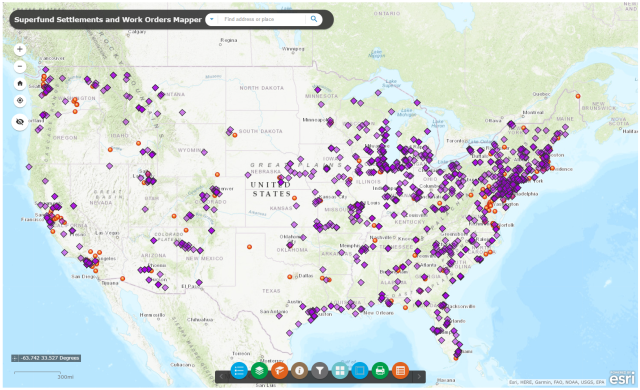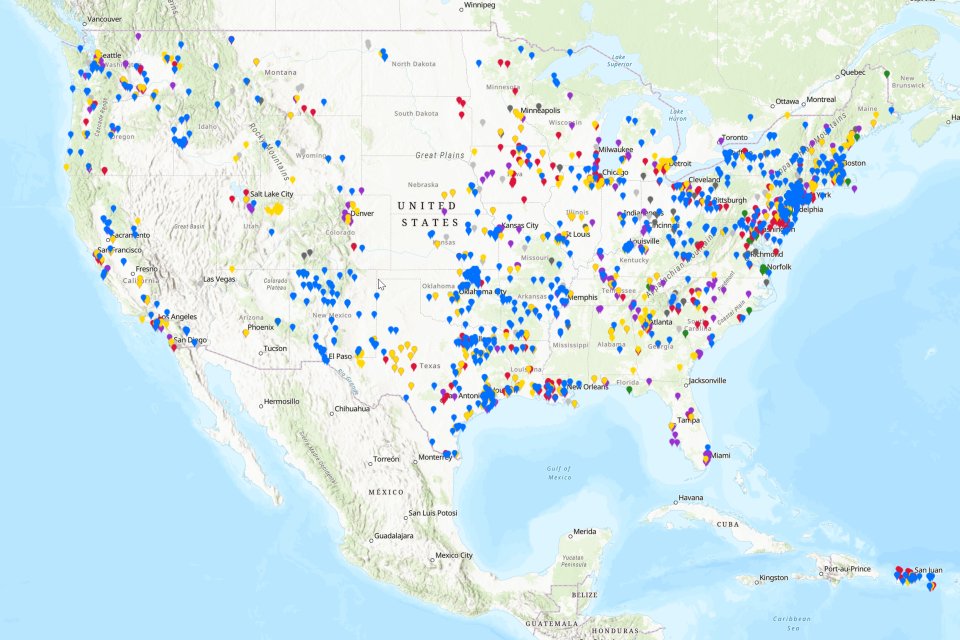Enforcement Annual Results for Fiscal Year 2021
- Overview
- Environmental Justice
- Compliance
- Criminal Enforcement
- Civil Enforcement
- Federal Facilities
- Superfund Enforcement
- Case Map
- Data and Trends
Overview
In FY 2021, EPA’s enforcement and compliance assurance actions resulted in:
- Commitments of more than $8.5 billion to return facilities to compliance, the highest amount in four years; 28% of those commitments were to address non-compliance in communities with environmental justice concerns.
- Proper treatment, minimization, or disposal of 7.6 billion pounds of hazardous and non-hazardous waste, more than in all but one of the past eight years.
- Private and federal party cleanup commitments of $1.9 billion, as well as more than $106.1 million for recovery of past costs the Agency spent cleaning up Superfund sites. The cleanup commitment was the fifth largest amount in the history of the program, and $279 million more than in FY 2020.
- Assessment of over $1.06 billion in penalties, the highest amount in four years.
- Twenty-eight years of incarceration for defendants sentenced in criminal enforcement investigations.
A vigorous enforcement and compliance program is necessary to protect our air and water, and to keep communities safe from environmental hazard and harm. President Biden’s Executive Order 14008 calls on EPA, through the Office of Enforcement and Compliance Assurance (OECA), to “strengthen enforcement of environmental violations with disproportionate impact on underserved communities.” Administrator Regan has also directed EPA to “strengthen enforcement of violations of cornerstone environmental statutes and civil rights laws in communities overburdened by pollution.” In response to this directive, EPA’s enforcement and compliance program quickly took steps to implement Administrator Regan’s commitment to communities facing substantial burdens from environmental noncompliance and the contamination of sites, along with taking action to fight the urgent threat of climate change.
Between April and July 2021, OECA’s Acting Assistant Administrator, Larry Starfield, issued four memoranda setting forth strategies to enhance consideration of environmental justice issues in enforcement. Those strategies include fostering meaningful engagement with communities, increasing our presence in communities through inspections, overseeing cleanup work, and assisting crime victims. EPA has been using its enforcement authorities, including emergency authorities to address immediate health threats, and has been pursuing actions to bring facilities back into compliance to prevent future violations, remediate past harm to communities, and provide tangible benefits for the communities. In a short period of time, we have implemented these strategies; our actions have resulted in meaningful improvements in communities and have laid the groundwork to reap greater results in later years.
In fiscal year (FY) 2021, EPA took aggressive early enforcement actions in communities overburdened by pollution. We issued two Clean Air Act (CAA) emergency orders to facilities in the United States Virgin Islands and South Carolina and 47 Safe Drinking Water Act (SDWA) orders to public water systems in vulnerable or overburdened communities, (including Cahokia Heights IL, Clarksburg WV, Jackson MS, and tribal areas); and two Resource Conservation and Recovery Act (RCRA) emergency orders to facilities handling and storing hazardous materials. In a nationwide settlement with Home Depot, EPA resolved violations of EPA’s Lead Renovation, Repair and Painting (RRP) rule which will result in system-wide changes to ensure that contractors who perform work in homes constructed before 1978 are EPA-certified and follow lead-safe practices. This action will significantly reduce children’s exposure to lead paint hazards in communities. EPA also finalized agreements with parties to clean up lead contamination at Superfund sites adjacent to communities with environmental justice concerns, including one site associated with two residential neighborhoods located near Atlanta’s downtown business district.
National Compliance Initiatives
EPA focuses its enforcement and compliance resources on the most serious environmental violations by developing and implementing national program priorities called National Compliance Initiatives (NCIs). In implementing the second year of these NCIs, EPA focused on improving air quality, providing clean and safe water, and ensuring chemical safety while enhancing shared accountability between the EPA and states and tribes with authorized environmental programs. In FY 2021, EPA concluded more national priority cases than in any of the prior 10 years.
We provided our co-regulators with meaningful engagement on the development and implementation of the NCIs. For example, we collaborated extensively with state primacy agencies, which includes both public health and environmental protection organizations. We worked closely with the Association of State Drinking Water Administrators in developing the drinking water NCI, and with the Association of Clean Water Administrators for the reducing significant non-compliance (SNC) with National Pollutant Discharge Elimination System (NPDES) permits.
The National Compliance Initiatives are:
- Creating Cleaner Air for Communities by Reducing Excess Emissions of Harmful Pollutants
- Stopping Aftermarket Defeat Devices for Vehicles and Engines
- Reducing Hazardous Air Emissions from Hazardous Waste Facilities
- Reducing Risks of Accidental Releases at Industrial and Chemical Facilities
- Reducing Significant Non-Compliance with National Pollutant Discharge Elimination System (NPDES) Permits
- Reducing Non-Compliance with Drinking Water Standards at Community Water Systems
NCI Highlights from FY 2021 include:
- Creating Cleaner Air for Communities by Reducing Excess Emissions of Harmful Pollutants: Enforcement actions provided emergency relief to protect communities from air pollution threats (e.g., harmful hydrogen sulfide emissions), and resulted in over 15.7 million pounds of methane reduced. Additionally, FY 2021 enforcement actions have resulted in a reduction of approximately 6.7 million pounds of VOCs (Volatile Organic Compounds) and HAPs (Hazardous Air Pollutants).
-
Stopping Aftermarket Defeat Devices for Vehicles and Engines: EPA resolved 40 civil enforcement cases -- the greatest number of resolutions for tampering and aftermarket defeat devices for any one year in the agency’s history – thereby stopping the manufacture or sale of devices intended to defeat required emissions controls on vehicles and engines used on public roads.
-
Reducing Hazardous Air Emissions from Hazardous Waste Facilities: Case conclusions more than doubled over FY 2020 with a total of 32 formal enforcement cases and issuance of 20 additional enforcement actions (e.g., Notices of Violation and Referrals), thereby reducing the health and environmental exposure of hazardous air emissions to nearby communities.
-
Reducing Risks of Accidental Releases at Industrial and Chemical Facilities: EPA settled several large judicial enforcement cases to resolve serious violations of the Chemical Accident Prevention Provisions of the CAA in FY 2021, reducing the risk to human health and the environment by decreasing the likelihood of chemical accidents. Additionally, EPA concluded 117 administrative penalty actions, the most in any year since this NCI was initiated in 2017.
-
Reducing Significant Non-Compliance with the National Pollutant Discharge Elimination System (NPDES) Permits: A reduction in the NPDES SNC rate (using a three month (one-quarter) rate) from a FY 2018 baseline of 20.3% to 12.6%.
-
Reducing Non-Compliance with Drinking Water Standards at Community Water Systems: EPA issued 47 Safe Drinking Water Act orders to public water systems in vulnerable or overburdened communities, performed offsite compliance monitoring at 239 Community Water Systems, and led or accompanied states, territories, or tribes that have been approved to implement and enforce the public water system program on 58 onsite inspections.
In addition to the six NCIs, OECA supports the EPA’s agency-wide priority to reduce children’s exposure to lead. The enforcement and compliance assurance program will contribute to the Agency's overall efforts to address lead exposure as outlined in draft Strategy to Reduce Lead Exposures and Disparities in U.S. Communities (Lead Strategy) currently out for public comment. Information on the EPA’s lead compliance and enforcement actions taken in FY 2021 is available in the 2021 Lead Bulletin (pdf) on the Enforcement Lead Laws and Regulations webpage. Highlights include, for example, EPA completion of 120 federal enforcement actions to ensure that entities such as renovation contractors, landlords, realtors, and others comply with rules that protect the public from exposure to lead from lead-based paint.
Climate Change
President Biden set clear priorities to address the climate crises. Enforcement can be a highly effective tool in addressing climate change. Thousands of facilities across the country are subject to permits or regulations that limit allowable emissions of greenhouse gases (GHG), or other compounds that contribute to or exacerbate the effects of climate change. Regulations and permits are only effective if the regulated community complies with their terms and enforcement is an important component of achieving that compliance. In addition to returning facilities to compliance and creating deterrence, enforcement settlements increasingly incorporate remedies that mitigate emissions including through clean and renewable energy projects. Climate change adaptation measures are also incorporated into EPA settlements.
In September 2021, EPA issued a final rule establishing a comprehensive program to cap and phase down the production and consumption of climate-damaging hydrofluorocarbons (HFCs) in the United States. OECA played a large role in this rulemaking which implements the American Innovation and Manufacturing Act (AIM Act) of 2020. As part of this effort, OECA and the Office of Air and Radiation stood up an HFC interagency task force to prevent the illegal trade, production, use or sale of HFCs, as well as other measures related to supporting the transition to alternatives and reclamation and recycling.
EPA, along with the Department of Justice (DOJ) and the Louisiana Department of Environmental Quality (LDEQ), announced a settlement with Dow Chemical Company and two subsidiaries, Performance Materials NA Inc. and Union Carbide Corporation, that, in addition to reducing excess emissions of pollutants, will also eliminate thousands of tons of GHG air pollution from four of Dow’s petrochemical manufacturing facilities in Texas and Louisiana.
COVID Response
As FY 2021 began, EPA continued to take enforcement actions to protect consumers from products making unsubstantiated claims to kill the coronavirus. EPA issued 617 civil enforcement actions, including: stop sale, use or removal orders, notices of refusals of admission for imports, and administrative or judicial cases. The Agency also opened approximately 9 criminal enforcement cases, and provided compliance information to businesses, consumers, and federal agencies.
Additional examples for responding quickly to entities making false claims with respect to COVID-19 include:
- EPA has overseen the registration of over 3,749 new establishments from April 2020 to October 2021. The presence of the coronavirus has created greater demand and markets for products claiming to kill the virus. This rush to market has accounted for a 215% increase in new establishment registrations prior to the start of the pandemic. This burgeoning market has raised questions from the public regarding the effectiveness of disinfectants against the virus. Some companies sought to take advantage of the crisis by manufacturing and selling products with unverified, false, or misleading claims about the effectiveness of the product against the virus in violation of the Federal Insecticide, Fungicide and Rodenticide Act (FIFRA). In January 2021, EPA updated a compliance advisory to provide consumers with information about how to evaluate the reliability of products claiming to disinfect surfaces against the virus. In early October, OECA issued a compliance advisory to the UV light industry to explain that UV lights are regulated under FIFRA as a pesticide device when the product includes a claim to be effective against viruses and bacteria. Also, EPA collaborated with FedCenter to develop a new web page to consolidate existing COVID-19 guidance information developed by federal, agency-specific, and non-federal guidance and recommendations to help understand how the federal government and other non-governmental organizations can minimize the impacts of COVID-19 within their respective communities.
- EPA issued Stop Sale, Use, or Removal Orders to 13 entities to prevent further distribution of multiple unregistered and misbranded pesticides and devices.
- EPA also issued 490 Notices of Refusal of Admission to prevent the importation of a broad range of unregistered or misbranded pesticides or devices making COVID-related claims into the United States.
- From April to August of 2021, four defendants were sentenced for criminally violating FIFRA as part of the COVID-19 Fraud Initiative. These included:

Virus Shut Out product 
Container of unapproved pesticide - Brandon Weber, who unlawfully sold an unregistered pesticide as a mask disinfectant;
- Marek Majtan, who manufactured and sold pesticides using a false EPA registration number claiming to kill COVID-19;
- Jiule Lin, who illegally distributed Toamit Virus Shut Out Cards on eBay; and
- Jon Gershman, who used a registered pesticide in a manner inconsistent with its label.
In February of 2021, PUREnvironment was also sentenced in Washington on state criminal charges after making fraudulent claims about its pesticide products efficacy against COVID-19.
Environmental Justice
President Biden has called upon EPA to strengthen enforcement of environmental violations with disproportionate impact on overburdened communities. (EO 14008). With respect to enforcement, Administrator Regan has directed EPA to “strengthen enforcement of violations of cornerstone environmental statutes and civil rights laws in communities overburdened by pollution.” (April 7, 2021)
To implement our environmental justice (EJ) goals, OECA has
- Issued four directives to enhance our work in Communities with EJ Concerns across all enforcement programs:
- Strengthening Enforcement in Communities with Environmental Justice Concerns (pdf)
- Memorandum from Acting Assistant Administrator for Enforcement and Compliance Assurance Larry Starfield, "Strengthening Environmental Justice Through Criminal Enforcement" (pdf)
- Memorandum from Acting Assistant Administrator for Enforcement and Compliance Assurance Larry Starfield, "Strengthening Environmental Justice Through Cleanup Enforcement Actions" (pdf)
- Using All Appropriate Injunctive Relief Tools in Civil Enforcement Settlements (pdf)
- Took aggressive early enforcement in overburdened communities. EPA issued two Clean Air Act emergency orders to facilities in the U.S. Virgin Islands and South Carolina. Additionally for drinking water violations, EPA issued 47 orders in communities such as Cahokia Heights, Illinois, Clarkburg, West Virginia and Jackson, Mississippi and in tribal areas, like on the Torres Martinez Desert Cahuilla Indians Reservation in California, in the Oasis Mobile Home Park where ongoing problems with their drinking water system endangered residents.
- Issued, along with DOJ an updated version of the Superfund enforcement program’s model remedial design/remedial action (RD/RA) consent decree (CD) and the accompanying statement of work (SOW). These two documents serve as the basis for negotiating cleanup work agreements with potentially responsible parties. The updated SOW model, anchored in the ideas outlined in OECA’s July 1, 2021, environmental justice memorandum, includes new language to support the Agency’s commitment to community engagement, which enhances the protection of communities disproportionately impacted by pollution.
- Provided communities with greater access to enforcement and compliance information about facilities in their backyard through an enhanced ECHO public database and an outreach pilot utilizing the Nextdoor social media application to identify and assist victims of environmental crimes.
- Partnered with DOJ to improve attention and support to the victims of environmental crimes, creating the Environmental Crime Victims Assistance Program. These efforts spotlight the fact that many environmental crime victims live in communities with environmental justice concerns. Additional barriers to early identification and notification of crime victims in EJ communities may result in a delay of, or failure to access, the services that victims of crimes are legally entitled. OECA’s Office of Criminal Enforcement, Forensics and Training has helped develop an Environmental Justice Workgroup to further integrate crime victim and environmental justice considerations into every environmental criminal investigation and prosecution. Nearly 30% of the defendants charged in FY 2021 committed environmental crimes that impacted EJ communities.
- Formed an OECA steering committee of senior executives to guide the implementation of Environmental Justice priorities to increase inspections, strengthen remedies, and improve community engagement on cases that most directly impact them.
One example of OECA’s focus on actions with the highest potential to improve compliance and protect communities, and particularly communities that have been historically overburdened by pollution is:
City of Houston
On April 21, 2021 in a final agreement with the EPA and the Texas Commission on Environmental Quality (TCEQ), the city of Houston, Texas, has agreed to pay a $4.4M penalty, split between the agencies, and invest $2B to implement a capacity, management, operation, and maintenance program which includes comprehensive system cleaning and a grease and root control program to minimize SSOs caused by sewer blockages. The City will also install more than 3,000 real-time sensors capable of sending alerts when conditions indicate a problem in the sewer system that may lead to an SSO. This action will result in close to 112 thousand pounds of water pollution being reduced, treated or removed as well as eliminating 2.83M gallons of untreated discharge.
Overall, of the cases concluded in FY 2021 by EPA’s civil enforcement program, 599 cases addressed noncompliance in areas with potential environmental justice concerns. Those enforcement cases are estimated to reduce pollution in these areas by 33.3 million pounds. Specifically, the pollutant reductions are from:
- Air pollutants, reduced, treated or eliminated – nearly 18 million pounds;
- Water pollutants reduced, treated or eliminated -- 15.2 million pounds.
Civil enforcement cases in areas with potential environmental justice concerns also resulted in 729,000 pounds of hazardous and non-hazardous waste treated, minimized or properly disposed.
Compliance
OECA promotes the use of the full range of Compliance and Enforcement Tools to advance Compliance Goals:
Inspections
EPA conducts onsite inspections of facilities to assess compliance with environmental requirements. Onsite inspections allow the Agency to spot problems not easily seen remotely, and they demonstrate the Agency’s presence to both the regulated industry and to communities. In FY 2021, the Agency performed over 3,200 inspections.
- Geospatial Measurement of Air Pollution (GMAP)
EPA maximized the use of advanced monitoring technologies, such as the GMAP mobile air monitoring vehicle, to support CAA inspections, identify emissions that potentially impact neighboring communities, and target facilities for inspections.
Offsite Compliance Monitoring
EPA also conducts offsite monitoring, using tools such as data mining, aerial photography, reviews of monitoring data, and information requests. The Agency significantly increased the use of these tools during the COVID-19 pandemic.
The Compliance Advisor Program
OECA Compliance Advisors work with small and rural public water systems and wastewater treatment facilities to help the systems achieve and/or maintain compliance. In FY 2021, this program assisted and trained approximately 140 small public water systems and 68 wastewater treatment facilities, most of which are in areas with environmental justice concerns. Additional support with American Rescue Plan funds will allow aid to an additional 150 systems.
Compliance Advisories/Enforcement Alerts
Compliance Advisories and Enforcement Alerts are issued to assist industry with compliance in a wide array of topics, such as community water system compliance, aftermarket defeat devices, and excess emissions at metal recycling facilities. This year OECA issued 11 compliance advisories and enforcement alerts.
Evidence Based Compliance Assurance
Evidence based compliance assurance is collecting data in a systematic way based on a theory of compliance to evaluate if an existing or new enforcement or compliance tool is effective. OECA developed the foundation for a national evidence-based compliance monitoring program. The foundation is made up of three elements that together will provide the framework for a state/Tribal/EPA partnership to support the evolution of an innovative and effective compliance monitoring program. The three areas are:
- Customer-focused, evidence-based inspection and enforcement targeting;
- EPA’s implementation of the Evidence-Based Policymaking Act of 2018 ("Evidence Act") via the Drinking Water Learning Agenda; and
- Evidence-based and Innovative Compliance Monitoring Program – developing and working on innovative, evidence-based compliance and enforcement projects by partnering with states, tribes, and academic stakeholders.
Voluntary Disclosures
The EPA Audit Policy, formally titled “Incentives for Self- Policing: Discovery, Disclosure, Correction and Prevention of Violations,” safeguards human health and the environment by providing several major incentives for regulated entities to voluntarily discover and fix violations of federal environmental laws and regulations. This year EPA received 665 disclosures and/or new owner audit agreements covering 755 facilities through voluntary self-disclosures. Additionally, in February 2021, EPA released updated Frequently Asked Questions for the Audit Policy program.
Criminal Enforcement
The Agency’s criminal enforcement program continues to hold individuals and companies accountable for wrongdoing. In FY 2021, the criminal enforcement program opened 123 new cases. An individual defendant was prosecuted in 88% of the criminal cases charged in FY 2021. The criminal enforcement program’s conviction rate was 96% in FY 2021. The following are several case examples:
Industrial Wastewater Company Owner Sentenced for Violating the Clean Water Act (CWA) in Connection with Discharges of Landfill Leachate to Flint, Michigan Sewer System
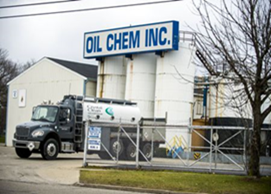
On May 14, 2021, Robert J. Massey, the president and owner of Oil Chem, Inc., was sentenced to serve 12 months in jail and pay a $5,100 fine. Massey pled guilty to a criminal charge of violating the Clean Water Act stemming from illegal discharges of landfill leachate—totaling more than 47 million gallons—into the sanitary sewer system (including areas with environmental justice concerns) in the City of Flint, MI, over an eight and one-half year period. Oil Chem processed and discharged industrial wastewaters to Flint’s sewer system. The company held a permit issued by the City of Flint which allowed it to discharge certain industrial wastes within permit limitations. Oil Chem’s permit prohibited the discharge of landfill leachate waste. Massey signed and certified Oil Chem’s 2008 permit application and did not disclose that his company had been and planned to continue to receive landfill leachate, which it discharged to the sewers untreated. Nor did Massey disclose to the City when Oil Chem started to discharge this new waste stream, which the permit also required.
Pennsylvania Biofuel Company and Owners Sentenced on Environmental and Tax Crime Convictions Arising out of Renewable Fuels Fraud (Title 18/Tax – RINs)

On October 20, 2020, Ben Wootton was sentenced to 5 years and 10 months of jail time. Race Miner was sentenced to 5 years and 5 months of jail time. The two biofuel company owners and their company Keystone Biofuels Inc. were also ordered to pay restitution and fines of $9,225,759.48. In April 2019, the three defendants were convicted by a jury on charges related to conspiracy and making false statements to EPA and conspiracy to defraud the IRS and preparing a false tax claim. Wootton and Miner co-owned and operated Keystone and purported to be a producer and seller of biodiesel, a type of renewable fuel. From August 2009 through September 2013, Wootton and Miner participated in a conspiracy to fraudulently generate renewable fuel credits, identified by renewable identification numbers (RINs) on Keystone fuel and, through January 2012, to fraudulently claim tax refunds based on the Biodiesel Mixture Tax Credit, a federal excise tax credit for persons or businesses who mix biodiesel with petroleum and use or sell the mixture as a fuel.
Border Pesticide Initiative Results in Prosecution of 50 Defendants for Smuggling Dangerous Chemicals (FIFRA/Title 18)

A California-based effort to block the smuggling of dangerous Mexican pesticides into the United States has resulted in the prosecution of more than 50 defendants for environmental crimes and the seizure of nearly 1,000 containers of illegal Mexican pesticides. The initiative began in response to complaints that law enforcement officers were injured by exposure to powerful Mexican pesticides not permitted in the United States during the removal of illegal marijuana cultivation sites on public lands. As an example of these efforts, on July 9, 2021, Veronica Perez was sentenced to 60 days in jail. This followed a guilty verdict by a federal jury in the Southern District of California in November 2020 related to the charge of smuggling unregistered pesticides into the United States. Perez concealed twenty containers of zinc phosphide (sold under the Mexican trade name Fosfuro de Zinc) in her purse and failed to declare the items at the border when she attempted to cross into the United States from Mexico on July 11, 2019. Consumption of a single zinc phosphide pellet can be lethal to a small bird or mammal. Ingestion of seven drops to one teaspoon of zinc phosphide would likely kill a 150-pound person. Perez also had Qufuran and Metaldane in her vehicle.
Company and Employees Sentenced for Tampering with Emission Devices on Trucks Used in Marcellus Gas Fields (CAA/Title 18)
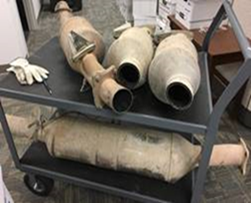
On April 20, 2021, a court sentenced Rockwater Northeast LLC to pay a criminal fine of $2 million for violating the CAA by tampering with diesel truck emissions’ systems. Rockwater Northeast LLC provides water management services to companies in the oil and gas industry. The company tampered with the emissions systems by installing “defeat devices” to disable the emissions diagnostic system in 31 of its heavy-duty diesel trucks. Seven individuals were also sentenced after pleading guilty to conspiracy and CAA violations.
Ohio Men Sentenced for Dumping Hazardous Waste around Columbus (Resource Conservation Recovery Act (RCRA)/Title 18)
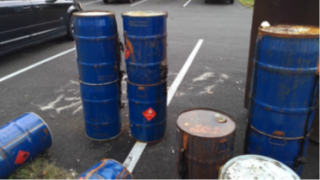
On March 3, 2021, a court sentenced Martin Eldridge to four months in jail and sentenced Khaled Ebrigit to 18 months’ home confinement. Ebrigit also will pay a $36,310 fine and perform 180 hours of community service. Eldridge and Ebrigit are jointly and severally responsible for $33,690 in restitution to the Ohio Environmental Protection Agency. Both defendants pleaded guilty to conspiring to violate RCRA for illegally transporting and disposing of hazardous waste. In October 2018, Conrex Property Management paid Ebrigit $5,000 to remove drums containing “chemical substances” from behind a property the company purchased. Ebrigit paid Eldridge $400 to dispose of three 55-gallon drums and 64 ten-gallon drums, most of which were clearly labeled "flammable" with detailed information regarding handling precautions. Fluids leaked from many of the drums. Eldridge loaded the drums into his van and dropped them off next to dumpsters at several apartment complexes throughout Columbus, including areas with environmental justice concerns. Emergency personnel responded to reports of the illegal dumping, collected the drums, and performed site cleanup.
Pittsburgh-Area Copper-Processing Company Sentenced on Felony Violations of the CWA
On December 15, 2020, Libertas Copper, LLC, dba Hussey Copper (Hussey), was sentenced to pay a $550,000 fine after pleading guilty to violating the Clean Water Act. Hussey operated a manufacturing facility on the Ohio River that produced flat-rolled copper products. Hussey operated a wastewater treatment plant pursuant to the terms of a National Pollution Discharge Elimination System (NPDES) permit. Between June 2012 and May 2017, the company submitted falsified discharge monitoring reports for 140 parameters, including a substantial number of copper discharges. Hussey also discharged oil in a quantity sufficient to generate sheens on the Ohio River over an approximately six-year period. Despite documenting hundreds of oil sheens at two of its outfalls (using internal records), Hussey failed to report these events to local or federal authorities. As a condition of probation, the company entered into a civil Consent Decree in connection with a pending parallel civil investigation, pursuant to which Hussey will implement a comprehensive environmental compliance program at its Leetsdale facility.
Civil Enforcement
Results
Despite continued challenges due to the COVID-19 public health emergency in FY 2021, EPA’s civil enforcement program took impactful cases to return violators to compliance and protect human health and the environment. In FY 2021, EPA’s civil enforcement program achieved:
- Commitments to reduce, treat, or eliminate almost 285 million pounds of pollution.
- Proper treatment, minimization, or disposal of over 7.5 billion pounds of hazardous and non-hazardous waste.
- Commitments of over $6 billion to return facilities to compliance.
- Assessment of $1.05 billion in penalties.
Consent Decree Oversight
In FY 2021, EPA concluded 114 civil judicial actions, the highest number in four years. After a consent decree is finalized, the crucial step of EPA’s oversight of the settlement’s implementation begins. Consent decrees often require the installation of pollution control equipment or construction and upgrades of critical infrastructure that may take years to fully implement. Oversight of these required obligations is a critical and, over time, increasing part of the EPA’s enforcement program. Currently the EPA oversees 485 judicial consent decrees for civil regulatory matters. Authorized states are our partners in nearly 40% of these settlements. Each stage of consent decree implementation must be carefully evaluated to ensure that compliance and environmental protection is assured.
Examples of FY 2021 significant achievements include the following civil enforcement cases:
Dow Chemical Company
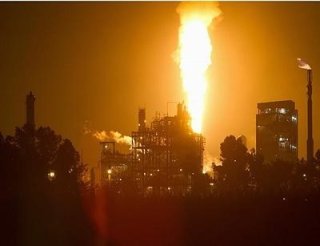
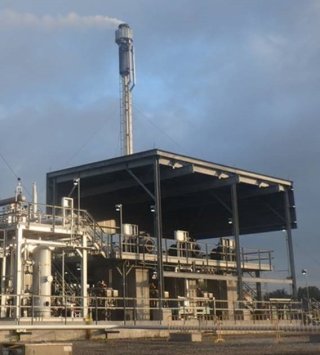
On June 10, 2021, EPA finalized a settlement with Dow Chemical Company and two subsidiaries (Dow) to resolve allegations that the companies violated the CAA by failing to properly operate and monitor industrial flares at their petrochemical facilities, which resulted in excess emissions of harmful air pollution. Under the settlement, Dow will spend approximately $294 million to install and operate air pollution control and monitoring technology to reduce flaring and the resulting harmful air pollution, including greenhouse gas emissions, from 26 industrial flares at the companies’ facilities in Hahnville, La.; Plaquemine, La.; Freeport, Texas; and Orange, Texas. Dow will also operate fence line monitors around the facilities to detect and correct excess benzene emissions and ensure continued protections for nearby communities. Finally, Dow must pay a $3 million civil penalty and perform three state-authorized beneficial environmental projects in Louisiana.
Toyota Motor Corporation

On April 2, 2021, EPA and DOJ entered a consent decree resolving allegations that Toyota Motor Corporation and affiliated companies (Toyota) violated the CAA. Toyota failed to comply with its CAA obligations to monitor vehicles for potential defects in emissions controls and report to the EPA, as well as failing to file reports describing the substance and progress of recalls.
Under the terms of the settlement, Toyota will take steps to ensure compliance and pay a civil penalty of $180 million. This is the EPA's fifth recent civil enforcement action against automakers that secured at least a nine-figure civil penalty.
Valero Energy Corporation
On October 19, 2020, the EPA and DOJ agreed to a settlement to resolve allegations that Valero Energy Corporation and a number of its subsidiaries and affiliates (Valero) violated the CAA regarding fuel quality standards and sampling, testing, and reporting requirements at 11 refineries and one import facility.
Under the terms of the settlement, Valero will develop and implement a company-wide fuels management system to help ensure its production of gasoline and diesel fuel complies with EPA standards, implement a mitigation action to offset past emissions at a cost of approximately $3 million, and pay a $2.85 million civil penalty. Valero separately committed to completing two benzene reduction measures at its refinery in Corpus Christi, Texas that Valero estimates will result in emission reductions of 583 pounds per year and will cost the company $1.775 million to implement.
The settlement also requires installation of pollution control measures at its El Vista Terminal near the Port Arthur Refinery resulting in a reduction of volatile organic compounds emissions of 23 tons per year. The El Vista Terminal is located near a community with environmental justice concerns.
Lehigh
On November 18, 2020, EPA, DOJ, the states of Indiana, Iowa, Maryland, New York, and Pennsylvania, Alabama’s Jefferson County Board of Health, and California’s Bay Area Air Quality Management District finalized a settlement with the Lehigh Cement Company, LLC and the Lehigh White Cement Company, LLC for violations of the CAA. On more than one occasion, the companies failed to obtain pre-construction permits and install and operate the appropriate air pollution control technology for major modifications at its cement manufacturing plants, resulting in significant emissions increases at 11 Portland cement manufacturing facilities located in seven states.
Under the terms of this settlement, the companies will invest in technologies to cut emissions of nitrogen oxide and sulfur dioxide at its 11 Portland cement manufacturing facilities, implement an environmental mitigation project at two facilities, and pay a $1.3 million civil penalty.
American Zinc Recycling (AZR)
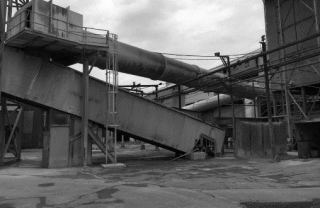
On February 9, 2021, EPA, DOJ, the State of Pennsylvania, and American Zinc Recycling (AZR) agreed to a settlement resolving violations of the CAA, CWA, the Emergency Planning and Community Right to Know Act (EPCRA), and RCRA. AZR violated its CWA national pollutant discharge elimination system (NPDES) permit by failing to
- have proper stormwater management and
- ensure process wastewater did not combine with stormwater.
AZR also violated spill prevention, control, and countermeasure (SPCC) plan requirements for failure to conduct required inspections and training. Additionally, the settlement resolved numerous CAA, EPCRA, and RCRA violations, including excess emissions, recordkeeping, reporting, and training violations.
Under the settlement, AZR will spend an estimated $4.3 million to ensure compliance with environmental requirements, such as improvements to monitoring of equipment, leak-detection equipment installation, and implementation of a dust control plan and a stormwater control plan. AZR will also pay a civil penalty of $3.3 million, to be divided equally between the United States and Pennsylvania.
Colorado Springs

On January 11, 2021, EPA, DOJ and the City of Colorado Springs, Colorado settled violations of the CWA with respect to the City’s storm sewer system. The State of Colorado was a co-plaintiff, and the Lower Arkansas Valley Water Conservancy District and the Board of County Commissioners of the County of Pueblo were plaintiff-intervenors.
The settlement requires payment of a $1 million federal civil penalty and improvements to the storm sewer system that will result in significant reductions in the discharge of pollutants, such as sediment, oil and grease, heavy metals, pesticides, fertilizers, and bacteria, into Fountain Creek and its tributaries in Colorado Springs. Communities, including those with potential environmental justice concerns, in and downstream of Colorado Springs will also see significant water quality improvements from the settlement. In lieu of paying a civil penalty to the State, the City performed State-approved supplemental environmental projects valued at $1 million that will improve water quality in the Arkansas River, into which Fountain Creek flows south of the City.
Corpus Christi
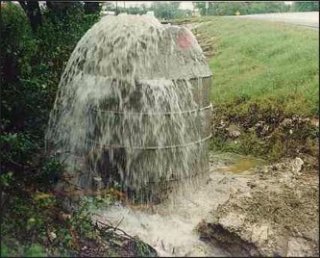
On January 11, 2021, EPA, DOJ, and the State of Texas finalized a settlement with the City of Corpus Christi to address its longstanding CWA noncompliance associated with its sewer system, one of the largest in the state with more than 1,100 miles of lines and more than 100 lift stations. The settlement includes specific requirements to address exceeding permitted pollutant limits from its wastewater treatment plant and sanitary sewer overflows, which are unauthorized discharges of raw sewage from municipal sanitary sewers. The city agreed to pay a civil penalty of $1,136,000 for its violations, which was split equally between the United States and the State of Texas.
Summit Midstream Partners
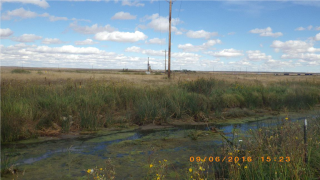
On September 28, 2021, EPA and DOJ finalized a civil settlement with Summit Midstream Partners, LLC and Meadowlark Midstream Company, LLC (Summit) to resolve allegations that the companies violated the CWA, which resulted in a discharge of 29 million gallons of produced water from its pipeline near Williston, ND. The spill is believed to be the largest inland spill in history. Under the settlement, Summit will pay $20 million in civil penalties, perform comprehensive injunctive relief including taking concrete steps to prevent future discharges, clean up the contamination caused by the spill and pay $1.25 million in natural resource damages to resolve the civil case. Summit has spent over $50 million to date to clean up the spill under state oversight; ongoing remediation efforts under the civil settlement are expected to continue over the next several years.
U.S. Magnesium

On January 20, 2021, EPA and DOJ agreed to a settlement with U.S. Magnesium (USM) to resolve RCRA violations at its Rowley, Utah facility. The settlement includes extensive process modifications at the facility that will reduce the environmental impacts from its operations and ensure greater protection to workers at the plant. This settlement requires construction of a barrier wall around 1,700 acres of the operating portions of the facility to prevent leaks or breaches of hazardous materials to the Great Salt Lake; construction of a filtration plant to treat all wastewaters; and attainment of an additional $10 million dollars by USM in financial assurance to ensure cleanup and closure of the facility. USM will spend approximately $37 million to implement the RCRA injunctive relief and at least $5.9 million to implement the cleanup remedy under the Superfund program. USM will pay a civil penalty of $250,000.
Home Depot

On December 17, 2020, EPA and DOJ reached a nationwide settlement with Home Depot resolving alleged violations of the Toxic Substances Control Act (TSCA) Renovation, Repair and Painting Rule (RPP). Home Depot will pay a $20.75 million penalty, the highest civil penalty obtained to date for a settlement under TSCA.
The settlement requires Home Depot to implement a comprehensive, corporate-wide program to ensure that the firm and contractors it hires to perform work are certified and trained to use lead-safe work practices to avoid spreading lead dust and paint chips during home renovation activities. In addition to creating an electronic compliance system to verify the contractors hired are properly certified, Home Depot will require contractors to use a detailed compliance checklist, will conduct thousands of on-site inspections, and will educate professional and lay customers about lead-safe work practices on the internet and in its stores.
Exposure to lead can cause a range of health problems, including behavioral disorders, learning disabilities, seizures, and death. EPA enforces the RRP Rule and other lead rules to protect children and others who are vulnerable to exposure to lead dust that can cause lead poisoning.
Electrolux
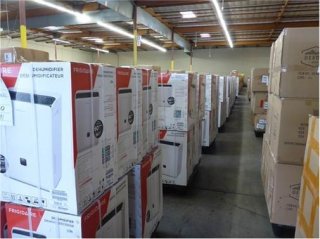
On October 6, 2020, EPA and Electrolux Home Products, Inc. (Electrolux), settled alleged violations of FIFRA, including import of unregistered pesticides and failure to file required Notices of Arrival of Pesticides and Devices document. Approximately 420,000 Frigidaire brand dehumidifiers and air conditioners were imported and contained filters incorporating an unregistered nanosilver and were labeled and marketed with pesticidal claims (e.g., “antibacterial filter,” “helps eliminate bacteria in the air that can make breathing difficult”). The Final Order was issued by the Environmental Appeals Board and required Electrolux to pay a civil penalty of $6,991,400.
Under a separate EPA administrative order, Electrolux consolidated the imported products, and others that were already in U.S. commerce, to remove the nanosilver filters and pesticidal claims from their packaging and online marketing information. Ultimately over 548,000 unregistered pesticide products were removed from commerce, most of which were made compliant and returned to the marketplace.
Apache Nitrogen Products
On February 16, 2021, EPA, DOJ, and Apache Nitrogen Products, Inc. (Apache) finalized the settlement to resolve alleged violations of the CAA’s chemical accident prevention measures and of federal laws requiring timely notification of ch1. 3rd emical accidents. EPA identified these violations following an anhydrous ammonia release that led to thirteen workers being injured at the Apache facility in St. David, Arizona. Apache, which uses anhydrous ammonia to manufacture ammonium nitrate-based explosives for mining operations and agricultural fertilizers, will pay a $1.5 million civil penalty and make widespread safety improvements to its facility, some of which have already been implemented.
Under the terms of the settlement, the company agreed to enhance safety equipment and procedures at the facility, including making improvements to its preventive maintenance tracking system to ensure equipment is being inspected and tested regularly, conducting an audit of its process safety culture with the assistance of a third-party expert, and upgrading its emergency response plan to include installation of an anhydrous ammonia monitoring system and enhanced public notifications.
Federal Facilities
Four Federally-Owned Properties in New York and New Jersey, Consent Agreement and Final Order, US General Services Administration
On August 26, 2021, EPA settled with the U.S. General Services Administration (GSA) to resolve violations of federal laws for the operation and maintenance of underground storage tanks containing diesel fuel at four GSA buildings in New Jersey and New York. The facilities where the violations occurred are the Robert A. Roe Federal Building in Paterson, N.J., the Martin Luther King, Jr. Federal Building and U.S. Courthouse in Newark, N.J., the Silvio J. Mollo Federal Building in Manhattan, and the Alfonse M. D’Amato U.S. Courthouse in Central Islip, N.Y. Violations at these facilities included failures to conduct required triennial inspections of overfill prevention equipment, ensure operations staff were properly trained, and ensure staff keep records related to the management of storage tanks as required by federal law. Under the settlement, GSA will pay a civil penalty of $107,000 and ensure staff who oversee the tanks at one of the New York facilities are trained and properly manage underground storage tanks.
Memphis VA Medical Center, Consent Agreement and Final Order, US Veterans Affairs
On February 5, 2021, EPA finalized a consent agreement and final order (CAFO) with the U.S. Department of Veterans Affairs for violations of the RCRA and the Tennessee Hazardous Waste Management Act at the Memphis VA Medical Center. VA Memphis failed to comply with certain RCRA Large Quantity Generator requirements relating to labeling, storage and management of hazardous waste, and contingency planning. EPA assessed a penalty of $42,720 for these violations. VA Memphis is in compliance with the CAFO issued on February 5, 2021.
Alliant Techsystems Operations, LLC, Consent Agreement and Final Order, US Navy
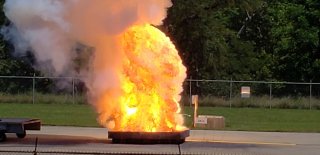
On May 17, 2021, EPA filed a CAFO with Alliant Techsystems Operations, LLC (ATO) to resolve violations under RCRA, CAA and the CWA at U.S. Navy owned Allegany Ballistics Laboratory in Keyser, WV. The ATO operated facility is a large quantity generator (LQG) and permitted as a Treatment, Storage, and Disposal Facility (TSDF) with open burning grounds for the treatment of energetic hazardous waste. This multimedia CAFO includes a $350,000 penalty order, and a RCRA compliance order which requires ATO to submit RCRA permit modifications to WVDEP, obtain approval for changes to the facility’s waste analysis plans, and mitigate hazardous waste runoff from their open burning grounds.
Eielson Air Force Base, Consent Agreement and Final Order, US Air Force
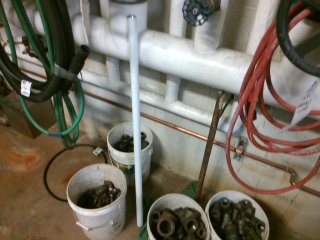
On September 23, 2021, EPA settled with the US Air Force at Eielson Air Force Base in Fairbanks, Alaska for violations of subtitle C of RCRA. Generators of hazardous waste must manage the hazardous waste in compliance with RCRA requirements to protect human health and the environment. The violations are based on an October 2020 inspection of Eielson Air Force Base and include:
- failure to make a hazardous waste determination;
- failure to comply with the conditions to store hazardous waste without a permit or interim status by not performing weekly inspections nor complying with the satellite accumulation requirements;
- failure to properly manage universal waste lamps; and
- failure to properly label a container of used oil.
Per the terms of the Consent Agreement and Final Order the Air Force has implemented standard operating procedures to improve its management of hazardous waste and has certified compliance. The Air Force also paid a penalty of $23,354.
Federal Facility Compliance Agreements
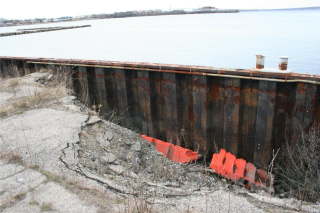
In FY 2021, the EPA entered into four Federal Facility Compliance Agreements (FFCAs) to address Clean Water Act violations at federal facilities. EPA signed three FFCAs with the US Navy, which will require more than $39 million in repairs at Naval Station Newport in Road Island to ensure the facility is in compliance with stormwater discharge laws, major upgrades to a wastewater treatment plant at San Clemente Island in California, and wastewater treatment improvements and operations changes at Joint Base Pearl Harbor Hickam in Hawaii. EPA also signed an FFCA with the John F. Kennedy Center for the Performing Arts in DC which will require a compliance implementation plan, effluent/influent monitoring, and reporting improvements to address NPDES permit violations. These FFCAs will help protect water quality and ocean wildlife.
FIFRA Notice of Warning Letters, US Immigration and Customs Enforcement
In FY 2021, EPA issued three FIFRA notice of warning letters (NOWs) to GEO Group, Inc, an Immigration and Customs Enforcement (ICE) contractor, for using registered disinfectant products in a manner inconsistent with the label at ICE Processing Centers in California, Washington, and Colorado. At a facility in Adelanto, California, Geo Group failed to ensure adequate dilution of HDQ Neutral®, failed to ensure detention officers and detainees wore appropriate personal protective equipment (PPE) during application, failed to prevent inhalation and contact with applicator’s eyes and skin, and failed to ensure use on appropriate surfaces as required by the label. At the facility in Tacoma, Washington, the company failed to ensure that detainees applying GS Neutral Disinfectant Cleaner® and Sani-T-10 Plus® had contaminated clothing washed prior to subsequent applications and had access to PPE as required by the product labels. At the facility in Aurora, Colorado, Geo Group failed to ensure that applicators, including employees and detainees, consistently maintained the required 10-minute contact time for disinfection as required by the labels for Halt® and GS N Disinfectant Cleaner. The NOWs advised GEO Group to take all necessary action to ensure that products are used is in accordance with the label as well as other FIFRA requirements, and that failure to do so could result in further enforcement action. EPA provided ICE with compliance assistance information, resulting in ICE sending out a directive to its facilities and contractors on the requirements for proper use of disinfectants.
Superfund Enforcement
Introduction
EPA’s vigorous enforcement program targets the most serious waste and chemical hazards and protects people from exposure to hazardous chemicals and wastes. The work of the Superfund enforcement program is critical to getting Superfund sites cleaned up and preserving taxpayer dollars and the Superfund Trust Fund to address truly abandoned and orphaned sites. In FY 2021, the Agency’s work to require parties to perform and/or pay for cleanup resulted in 89 settlements and orders totaling over $2 billion. The commitments from potentially responsible parties (PRPs) totaled over $1.9 billion, the fifth largest total in the history of the program. The Agency negotiated six prospective purchaser and other third-party settlements totaling more than $16.8 million in cleanup commitments and cost recovery. Additionally, the EPA issued 79 comfort/status letters across the country to address cleanup and promote reuse and redevelopment.
Since the inception of the Superfund program, 9,529 Superfund enforcement instruments, including reuse agreements have been finalized addressing contamination at 3,903 sites across the country. The estimated value of private and federal party commitments to clean up sites is approximately $40.9 billion and commitments for cost recovery total more than $7.5 billion for a combined total of almost $48.4 billion.
The Superfund Enforcement Cleanup Work map displays the sites across the country currently being cleaned up as a result of the EPA’s enforcement efforts.
More information on the Superfund enforcement program is available on the Agency’s website.
Case Highlights:
$1.1 billion UAO to City of New York at Gowanus Canal Superfund Site
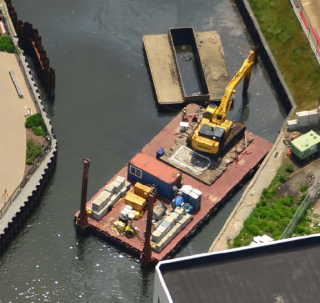
In March 2021, EPA issued the largest dollar value unilateral administrative order (UAO) in the history of the program to the City of New York to address cleanup of the Gowanus Canal Superfund site. The city has been ordered to construct and operate two combined sewer overflow (CSO) retention tanks to control contaminated solids discharges. The UAO is estimated to cost $1.1 billion and will take about nine years to implement. The main environmental benefit of this UAO is that during large rain events, the massive sewage holding tanks will hold back raw sewage water which contains hazardous substances from re-contaminating the canal. Cleanup work within the canal will continue to support redevelopment in the commercial and residential areas adjacent to the canal.
The order also requires the City to provide treatment for separated storm water discharges, perform maintenance and monitoring to ensure protection of the cleanup work, and ensure that developers comply with municipal storm water regulations to prevent additional sewer volume from impairing the effectiveness of the CSO tanks.
Major milestone reached in the remedial design phase of cleanup for Portland Harbor
On January 20, 2021, EPA, along with federal, state, and local government parties, finalized an agreement with 12 parties to develop detailed cleanup plans for the Swan Island Basin Project Area, covering approximately 117 acres of the Portland Harbor Superfund Site in Portland, Oregon. The Swan Island area is among the major “hot spot” cleanup areas within the site, with high levels of contamination. This latest cleanup agreement represents nearly 25 percent of the site’s total cleanup area and completes a major milestone to bring 100 percent of the site’s areas requiring active cleanup into the remedial design phase of the Superfund cleanup process. The cleanup work at this site will return the Lower Willamette River to a healthy, working waterway for all and will impact many groups and communities with environmental justice concerns. Roughly 21– 38% of the population living within one mile of the site are part of overburdened communities impacted by contamination, and roughly 36– 47% live below the poverty line. The value of this settlement agreement is estimated at $43 million.
Cleanup of PCB-contaminated sediments in Kalamazoo River

A December 2020 consent decree between EPA and NCR Corp., valued at $226 million (additional value to the natural resource trustees and State of Michigan brings the total to $245 million), requires the company to clean up polychlorinated biphenyls (PCB) contaminated sediment and fund future cleanup costs at the Allied Paper Inc./Portage Creek/Kalamazoo River Superfund Site, along with natural resource damage claims and past costs. This will result in cleaner, stable banks that will no longer contribute contamination to the River, allow fish passage, and enable recreational access across 41 miles of the River, significantly increasing recreational activities throughout multiple communities once the project is completed. NCR Corp. will spend approximately $135.7 million cleaning up approximately 15 miles of the Kalamazoo River.
Groundwater Contamination addressed at B.F. Goodrich Superfund Site
On January 27, 2021, EPA entered into a consent decree with B.F. Goodrich Corporation, PolyOne Corporation, and Westlake Vinyls, Incorporated to perform cleanup work at the B.F. Goodrich Superfund site in Calvert City, Kentucky. The cleanup of contamination from beneath the Tennessee River and treatment of the groundwater plume beneath the river will ensure that the drinking water relied upon by the surrounding communities meets environmental standards and is safe to consume. The site is unique in comparison to most Superfund sites because it involves an operating chemical manufacturing plant. Until 2009, much of the cleanup work at the site was managed by the Kentucky Department of Environmental Protection (KDEP) under RCRA and only focused on a portion of the site. In 2009, KDEP requested that EPA expand the scope of the Superfund response, specifically to expand the site area originally identified in the 1984 National Priorities List to include the rest of the B.F. Goodrich operating plant facility. Cleanup work will address contaminated soil and groundwater to prevent migration into the Tennessee River. The estimated value of the remedial action is approximately $108 million. Additionally, the parties will pay EPA $10 million for the Agency’s future oversight costs.
Consent decree to address mining waste benefitting co-plaintiff Shoshone-Bannock Tribes at Ballard Mine site
A May 2021, consent decree between EPA, the State of Idaho, the Shoshone-Bannock Tribes, and P4 Production, LLC (P4), valued at $41 million, requires the company to perform cleanup work and pay for prior cleanup costs at the Ballard Mine Superfund site in Soda Springs, Idaho. EPA is the lead agency at the site; the state and the Shoshone-Bannock Tribes will assist with oversight of the cleanup work. The Shoshone-Bannock Tribes have treaty rights on unoccupied federal lands near the site.
The company plans to utilize a combination of media-specific cleanup methods and technologies that may result in the recovery of phosphate ore during implementation of the cleanup plan, which could help fund the cost of the cleanup work and create clean fill for the site. Taking advantage of the efficiencies afforded by the mining and recovery process, specifically generating clean fill and grading as part of the potential ore recovery, the work is anticipated to take six to eight years to complete. To ensure there are funds to fully complete the cleanup, EPA also secured financial assurance from P4 in the amount of approximately $98 million. The financial assurance helps to ensure that the potentially responsible party, and not public funding sources, bears the financial burden of completing Superfund cleanup work.
Multiple parties to cleanup groundwater contamination at Montrose Chemical and Del Amo Superfund sites

Three September 2021 consent decrees between EPA and Montrose Chemical Corporation, Bayer CropScience Inc., TFCF America Inc., and Stauffer Management Company LLC, require the companies to pay for and clean up contaminated groundwater at the Montrose Chemical Corp. Superfund and the Del Amo Superfund sites in Los Angeles County, California. The work, valued at $77.6 million, will improve community health and drinking water sources. The companies will also investigate potential contamination of the historic storm water pathway from the Montrose Chemical Corp. site and reimburse EPA for $8 million in past cleanup costs. Another company, JCI Jones Chemicals Inc. will participate in the groundwater cleanup work as well.
The two sites have soil and groundwater contaminated with hazardous chemicals largely from the manufacturing of synthetic rubber and the pesticide dichloro-diphenyl-trichloroethane (DDT), which impacted the surrounding communities in southern LA County. Overall, the communities near the former manufacturing facilities are heavily impacted and burdened by current and past industrial businesses surrounding the area resulting in poor air quality. Residents in these neighborhoods are more likely to be minority giving rise to environmental justice concerns.
Throughout the negotiation process, EPA Region 9 worked to address community concerns, including excavating DDT contaminated soil from multiple residences, conducting a vapor intrusion study and other activities to address environmental risks resulting from contamination at the sites. The cleanup work resulting from these three settlement agreements, particularly to protect nearby communities’ drinking water resources, reflects the Agency’s focus to actively protect human health and the environment while negotiating with the responsible parties to perform the work.
- More information: Del Amo Los Angeles, CA Superfund site profile web page and Montrose Chemical Corp. Torrance, CA Superfund site profile web page.
Superfund landowner liability protections help promote redevelopment
EPA encourages the cleanup and reuse of contaminated properties by implementing the Superfund landowner liability protections and addressing liability concerns through the use of site-specific tools, including settlement agreements.
Des Moines TCE Superfund Site BFPP Agreement
A February 2021, settlement regarding the Des Moines TCE Superfund site, a long vacant 43-acre property located in Des Moines, Iowa, provides a clear path for its cleanup and future redevelopment. Dico Inc. and its parent company Titan Tire will pay $11.5 million to settle past and future cleanup costs, civil penalties, and punitive damages, as well as transfer the vacant property to the City of Des Moines, which occurred in May 2021. The city, under the bona fide prospective purchaser (BFPP) provisions of the settlement, will perform additional cleanup and other work, including operation and maintenance of the groundwater system and the site’s asphalt cap. EPA is working closely with the city and the Iowa Department of Natural Resources to ensure that reuse of the site is compatible with the cleanup remedy and remains protective of human health and the environment. Currently, the potential redevelopment plans include a 6,300-seat multi-use outdoor stadium as well as a hotel and other mixed-use developments. The cleanup and redevelopment of this long-blighted property will provide numerous economic and social benefits to the community.
Addressing lead contamination at Superfund sites
The Superfund program cleans up hazardous substances such as lead to protect human health and the environment. The Superfund enforcement program makes cleanups at sites with lead contamination possible by identifying the parties responsible for the contamination and using Superfund enforcement authorities to negotiate agreements or to order cleanup work.
Westside Lead Superfund Site Removal Agreement
In December 2020, EPA reached an agreement with the nonprofit Westside Future Fund, Inc. (WFF) to perform cleanup work at the Westside Lead Superfund site in Atlanta, Georgia. The cleanup at the site will address lead contamination on 16 residential properties in two communities with environmental justice concerns adjacent to Atlanta’s downtown business district. WFF is a 501(c)(3) charitable organization whose mission includes preserving and expanding affordable housing in the two communities. The removal work entails excavating, hauling away, and backfilling lead-contaminated soil from the residential properties at a cost of over $1 million. More information on Superfund enforcement actions to address lead contamination at sites and facilities is available in the 2021 "EPA Reduces Lead Exposure Through Cleanup Enforcement" bulletin.
Madison County Mines Superfund Site Residential Property Cleanup
In March 2021, EPA and Delta Asphalt, Inc. reached an agreement to resolve the company’s liability for operable unit 5 at the Madison County Mines Superfund site in Madison County, Missouri. EPA performed an environmental justice mapping and screening tool (EJSCREEN) analysis for the Fredericktown area and found that all the indicators of potential environmental justice concerns were around or above the 80th percentile, compared to the rest of the state. EPA removal and remedial actions have addressed lead contamination at approximately 2,095 residential properties at the site to date, cleaning up over 650,000 cubic yards of contaminated soil in addition to more than 160 acres of mine waste.
Superfund Enforcement Cleanup Work Map
EPA's Superfund Settlements and Work Order Mapper highlights the current cleanup work taking place at privately- and federally-owned Superfund sites across the country resulting from the Agency’s enforcement work to negotiate cleanup settlement agreements or issue orders. The data is current through September 30, 2021.
Visit the Information about the Superfund Cleanup Work Map webpage for the map’s data overview, disclaimer language, and user guide.

